Last week, as I shopped last minute for a Valentine’s Day surprise for my food allergic son at a local market, the recent Órla Baxendale tragedy weighed heavily on my mind and heart.
In case you did not hear, Órla Baxendale, a young professional dancer from the U.K., with allergies to peanuts and tree nuts, ate a cookie purchased from a Connecticut retailer. The Vanilla Florentine cookies were mislabeled and did not disclose they contained peanuts. The dancer had an anaphylactic reaction and in spite of using two epinephrine auto-injectors she was not able to stop it. She passed away on January 11 at age 25. The retailer recalled the cookies for undeclared peanuts on January 23, then updated the recall two days later to include undisclosed egg. Allergic Living magazine reported on the tragedy and you can read their coverage here.
Another bright light with everything ahead of her has been extinguished by this invisible disease that makes food, meant to nourish and delight, lethal. I am beyond sad for Órla’s family and their devastating loss.
Their loss hits me particularly hard, makes me feel especially vulnerable as a food allergy parent. I mean, how can I protect my adult son from something like this?
My son with food allergies is about the same age as Órla was when she died. Like Órla he has his whole life ahead of him. He’s only just begun. Like Órla, he is ANA allergic to peanuts (he’s also ANA allergic to eggs.) We shop frequently at the Connecticut retailer involved in the tragedy. And, honestly? If I’d read that label on the Vanilla Florentine cookies — it read 100% fine for his allergy profile — I just might have been tempted to buy them. For my son. To try.
On Valentine’s day, with Órla’s story on replay in my head, I anxiously read labels on chocolate treat possibles for my son. I read labels twice, backwards and forwards. I used a barcode scanning app as a second set of eyes to sanity check my read of the labels. I looked for PAL statements and scrutinized them. I considered it a huge win when I found some chocolate coins (no matter they were dark chocolate when he prefers milk) produced by Vermont Nut Free, a manufacturer we’ve trusted for years.
But all the time, in the back of my mind, as I searched the shelves for treats, a little voice was saying,
“What if the manufacturer fails to disclose an allergen?”
“What if there’s undisclosed peanuts or eggs in these chocolate treats?”
“I should call the manufacturers, BUT it’s late. I’m out of time. Can I trust? Do I trust?”
The Órla tragedy has shaken me to my core — you love hard and deep no matter how old your child is — and it’s made it exponentially harder for me to have faith in manufacturer food labeling. Lack of manufacturer transparency and manufacturer mistakes put people with food allergies at risk.
In a ‘State of the Nation 2024 Product Safety And Recall Report (U.S. Edition)’ published by Sedgwick (a product recall facilitator that aggregates and tracks recall data across multiple regulatory agencies and industries,) undeclared allergens were the leading cause of food recalls in 2023. Sedgwick reported 232 recalls for undeclared allergens (45.8% of total food recalls) with Nuts and Milk, Soy, and Sesame being the most common allergens involved.
Órla’s loss has added urgency (and angst) to my efforts to convince my adult son to seek out a new allergist (he aged out of his pediatric practice,) undergo a baked egg challenge (his numbers greenlighted this 6 years ago,) and pursue some kind of desensitization treatment for peanut.
Living Cautiously but Not Fearfully with Food Allergies— A Roadmap
Allergens can hide even though you do everything in your power to vet and verify the allergen-status of food you want to eat. Órla’s story is a harsh reminder of that. But, you cannot live your life in fear of allergic reactions, or allow food allergies to prevent you from living your best life. That would be tragic, too. We’re gifted with only one life to live.
Here’s a roadmap for living cautiously but not fearfully with food allergies:
…Control what you can:
- Know all your allergens and be familiar with which foods most likely contain them.
- Vet the foods you eat as best you can. Read, read, read labels. Call manufacturers when possible. Visit manufacturer websites.
- Explain and re-explain your allergies to people who will prepare and serve you food, observing them closely for telltale signs of incomprehension like an offer of a gluten free menu, or glazed eyes, or refusal to write down your allergy list, especially when it’s >1.
- Keep up-to-date antihistamines and TWO epinephrine auto-injectors within easy reach. Always.
- Know the symptoms of anaphylaxis and keep your Anaphylaxis Emergency Action Plan at hand.
- Never hesitate to use your epinephrine, even if symptoms are a bit ambiguous.
- Find and use tools that can backstop you in emergencies, make it easier to explain your allergies to others, and keep track of your reactions and medication expiration dates. The Allergy Force App, Equal Eats, and Find ER Now are useful tools that can help.
…And, take proactive action when you can:
- Exploring desensitization treatments like OIT, or SLIT, or EPIT and pursuing them if they’re a fit for your life and your goals,
- Or, exploring the use of the newly FDA-approved Xolair treatment for defusing the severity of allergic reactions, in case of an accidental allergen run-in,
- Or, braving oral food challenges to be 100% sure you’re allergic (or not) to something, or at least to open up a new food category with some limitations (thinking baked milk or egg challenges.)
You can live free with food allergies when you embrace caution, not fear. You just might live life a little differently by controlling what you can in your day-to-day and being informed and proactive about treatment options.

“…How we handle our fears will determine where we go with the rest of our lives. To experience adventure or to be limited by the fear of it.”
—Judy Blume, Author
 |
Empowering people to live more easily & safely with food allergies through technology and education. |
| About the Author: Gayle Rigione is CEO of Allergy Force, the food allergy management app. She’s also an allergy mom. She’s lived the heart stopping moments when her son ate the wrong thing, second guessed reactions and raced to the ER. Her professional and personal experiences fuel her passion for creating tools for people with food allergies. Whatever you do, do it with a full heart. Audentes Fortuna Iuvat | |
Images: Gustavo Fring on Pexels and Allergy Force on Canva


